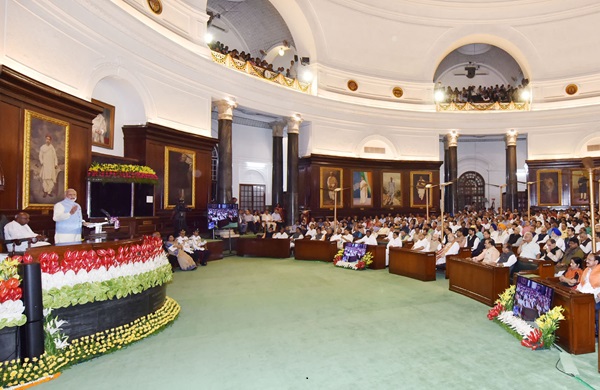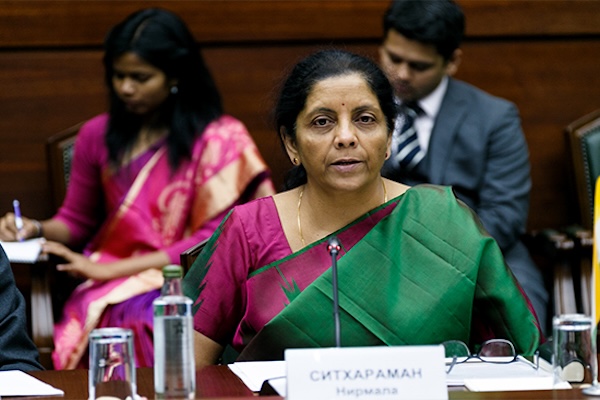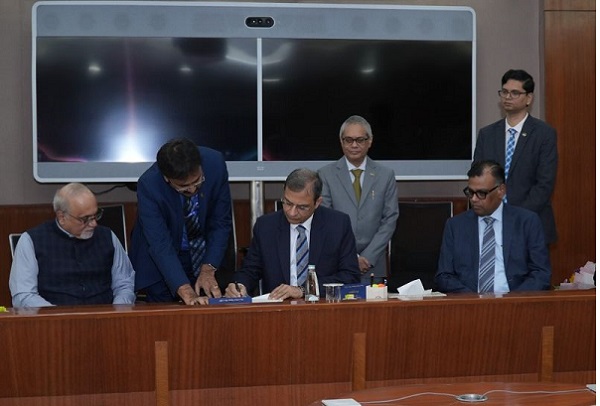.png)

Najib Shah retired as the Chairman of the Central Board of Indirect Taxes and Customs.
March 11, 2025 at 4:17 AM IST
Goods & Services Tax is never far away from the news. Finance Minister Nirmala Sitharaman has recently spoken at the ET Awards function on a topic which has always troubled GST-rate rationalisation. She mentioned that work on rate rationalisation ‘has almost reached a finale’. She explained this would mean ‘reduction, rationalisation of rates and looking at the number of slabs’.
Though no timeline was indicated, it would appear from her statement that she will take a final look at the proposals and take them to the Council for approval and that this would happen soon.
This is welcome news if it materialises soon.
By way of background, it may be mentioned that the issue of the multiplicity of slabs has always troubled GST. The five rates, 0-,5-,12-,18-, and 28% are the popularly known slabs; there is also a 3% and a 0.25% slab, and different rates for composition taxpayers depending on their turnover.
The rates in GST have been determined seeking to balance both equity and the need for raising revenue and after detailed discussions and acceptance by all members of the GST council. Commodities of mass consumption are in the lower range, with rates increasing as we go up the value chain.
A single rate is the ideal. However, it must not be forgotten in all this rhetoric that a single rate (if at all) would be in the range of 15-16%.
If today the weighted average rates are in the region of 11.4%, compared to the 15-16% revenue-neutral rate recommended when GST was first being considered, it is not just because of the reduction in rates but also because of multiple exemptions that have crept in over time.
In GST, every stage of the value addition is taxed with a tax credit available for the taxes paid at the earlier stages of the value chain. It is forgotten that exemptions in such a value-added tax regime have to be kept to a minimum so that there is no break in the value chain. The multiplicity of exemptions has distorted the tax structure since they break the value-added taxation principle.
Hence, there are multiple challenges.
| (Amount in ₹ trillion) | 2017-18 | 2018-19 | 2019-20 | 2020-21 | 2021-22 | 2022-23 | 2023-24 |
| CGST | 1.19 | 2.02 | 2.27 | 2.1 | 2.71 | 3.24 | 3.76 |
| SGST | 1.72 | 2.79 | 3.09 | 2.73 | 3.46 | 4.1 | 4.71 |
| IGST | 3.87 | 5.99 | 5.87 | 5.66 | 7.64 | 9.45 | 10.27 |
| Domestic | 1.93 | 3.08 | 3.19 | 3.04 | 3.87 | 4.73 | 5.44 |
| Imports | 1.94 | 2.9 | 2.67 | 2.62 | 3.77 | 4.72 | 4.83 |
| Comp Cess | 0.63 | 0.97 | 0.99 | 0.88 | 1.08 | 1.28 | 1.45 |
| Domestic | 0.56 | 0.87 | 0.88 | 0.79 | 0.99 | 1.17 | 1.33 |
| Imports | 0.06 | 0.1 | 0.1 | 0.09 | 0.09 | 0.11 | 0.12 |
| Total | 7.41 | 11.77 | 12.22 | 11.37 | 14.88 | 18.08 | 20.18 |
Higher Rates
For instance, reduction in slabs will mean a merger of two or more slabs and arriving at a mean rate – so 5 and 12 could merge at 10, 12 and 18 could merge at 15, with 28 (the rate on which cess is also applied on specific goods) remaining. All this will mean upward movement in the rates of many items as much as downward movement.
Again, revenue considerations must be kept in mind. For instance, the maximum GST revenue is from the 18% slab, and any reduction in this slab will have revenue implications.
It is for this reason that the multiple committees on rate rationalisation – starting with the first in 2021 under the stewardship of the then Chief Minister of Karnataka, B.S. Bommai – have not been able to come to any conclusion on the reduction of slabs.
They have been recommending a piecemeal reduction in rates of commodities and seeking to address the inverted tax structure issue. The fifth such committee on rate rationalisation, headed by the Deputy Chief Minister of Bihar under Samrat Chaudhary, is currently in vogue.
There was a lot of speculation just before the 55th GST council meeting, held on Dec 21, 2024, that this committee had made several recommendations regarding a reduction in the slabs, including recommending a new 35% rate.
But there is no official word on it yet. And with elections in Bihar to be held in September- October, the present committee may not have the time to deliberate on these matters.
No date has been announced for the next GST council meeting either. It may, therefore, be hard to guess the timeframe that the finance minister had in mind when she said the changes will happen “soon”.




